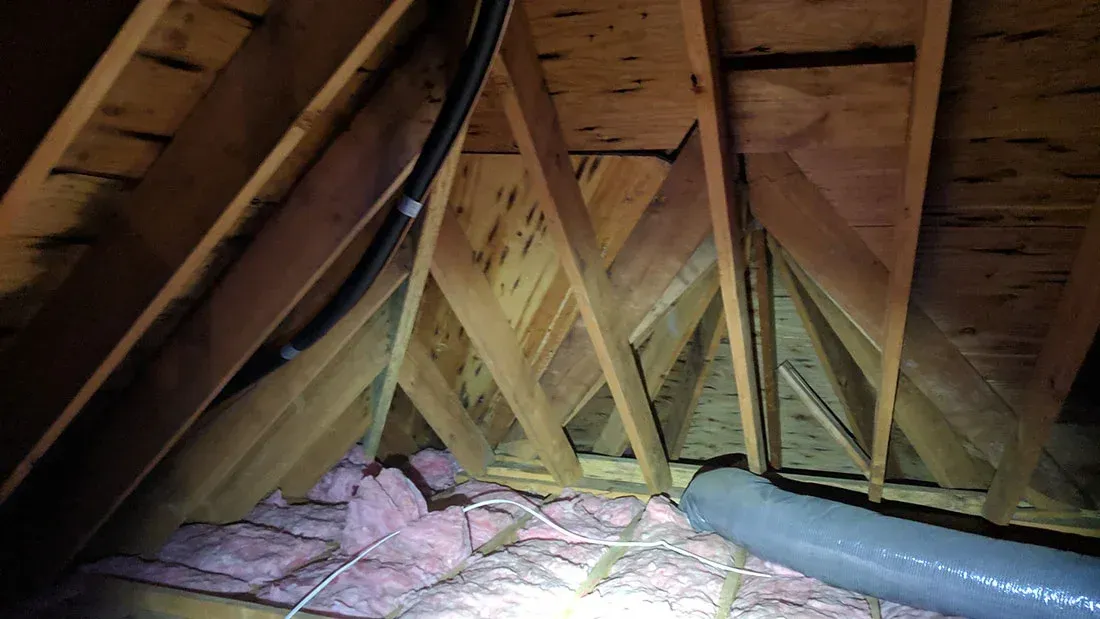Attic Mold Remediation in Myrtle Beach: When is it Time to Get Your Attic Inspected?

Attics are one of the most overlooked spaces in a home—often used for storage or not visited at all. Yet this quiet, tucked-away zone can become a perfect breeding ground for mold, especially in a coastal, humid climate like Myrtle Beach. If left unnoticed, attic mold can damage structural components and circulate spores into the rest of the house. Recognizing the subtle signs and knowing when to seek professional help can save homeowners from bigger headaches down the road.
Why Attic Mold Thrives in Myrtle Beach
Myrtle Beach’s hot summers, frequent storms, and high humidity mean excess moisture can easily collect in attic spaces. A few common contributors include:
· Roof Leaks: Missing or damaged shingles, improper flashing around vents, or even small tears in the roof can let water seep into attic beams and insulation.
· Inadequate Ventilation: Warm, moist air from living areas may rise into the attic, causing a stuffy environment and condensation on cooler surfaces.
· HVAC or Plumbing Issues: Dripping condensation lines or poorly sealed ducts can introduce constant moisture, allowing mold to settle in.
· Overinsulation or Faulty Insulation: Trapped humidity has nowhere to go, creating the perfect setup for mold growth along wooden trusses or roof sheathing.
All these scenarios can remain hidden for months or even years if the attic isn’t visited regularly. By the time discoloration or a musty odor becomes too strong to ignore, the mold may have already spread extensively behind insulation or onto wooden supports.
Signs Your Attic Might Have Mold
Stale or Musty Smells: A stuffy, earthy, or “wet sock” odor coming from the attic often hints at mold developing out of sight. Even if you don’t see mold patches, pay attention to unusual smells wafting down from the ceiling or closet hatch.
· Discoloration or Water Stains: Black, green, brown, or white spots on rafters, insulation, or the underside of roof sheathing can be a giveaway. Also, watch for indications like rusty nails, dark streaks, or condensation on wooden beams.
· Peeling or Damaged Insulation: Excessive moisture can compromise insulation, making it damp, matted, or moldy. If attic insulation looks discolored or has an odd texture, it’s time for a closer inspection.
· Unexplained Health Symptoms: Prolonged mold exposure, even if confined to the attic, can sometimes affect the respiratory health of household members. Allergic reactions, increased asthma attacks, or persistent colds might be connected to hidden mold spores circulating.
· Hot, Stuffy Attic Conditions: In Myrtle Beach, an unventilated attic can quickly become a sauna-like environment that leads to water condensation. If stepping into the attic feels overwhelmingly hot and humid—beyond typical summer heat—mold may already be thriving.
Non-Visual Clues You Shouldn’t Ignore
Many homeowners think no visible mold means no mold problem. But mold can hide behind drywall, under insulation, or in corners that aren’t easily seen. Beyond smelling something funky or noticing a sudden spike in humidity, pay attention to small warning signs, such as:
· Consistent Drip or Water Sounds: If a quiet drip or trickle is heard after rainfall, there could be a roof leak inside the attic.
· Unusual Insect Activity: Some pests flock to moist environments. If you notice more bugs entering your living areas, the attic could be a moisture source.
· Stained Ceilings Below the Attic: Water spots on upstairs ceilings or near light fixtures could be caused by hidden moldy patches in the attic above.
The Risks of Delaying Attic Mold Remediation
Some might assume that it poses minimal risk since no one lives in the attic. Unfortunately, mold is not strictly confined by walls or floors.
· Structural Damage: Over time, mold weakens wood by consuming its fibers. Rafters, roof sheathing, and support beams can lose integrity.
· Spread to Living Areas: Though less common, mold spores can travel through vents, small openings, or the HVAC system, eventually reaching occupied spaces.
· Costly Repairs: A small, contained mold issue is simpler (and cheaper) to resolve than a widespread infestation. Letting it go might mean costly roof repairs or replacing large sections of attic framing.
Staying Ahead of Attic Mold
If left unaddressed, attic mold can escalate from a minor annoyance to a full-blown disaster. Regular inspections, proper ventilation, and attention to roof maintenance go a long way toward prevention. Early intervention can save significant stress and expense if there’s any suspicion of mold in the attic.
· Schedule Periodic Roof Checks: Detect leaks, missing shingles, or damage after storms.
· Upgrade Ventilation and Insulation: Strike the right balance to allow airflow without trapping excess heat or moisture.
· Consider an Annual Attic Walkthrough: Even a brief look under insulation or in corners can spot issues before they worsen.
In a climate as warm and humid as Myrtle Beach, diligence pays off. With the right approach, homeowners can keep their attics mold-free and ensure the safety and comfort of the entire household. If something seems off—odors, water stains, or persistent humidity—don’t wait to explore what’s happening above the ceiling. A prompt inspection and any necessary remediation can protect your property and your family’s well-being.



